Contemporary Slavery in Armed Conflict

Rights Lab project lead: Kevin Bales
Funder: AHRC, ESRC
Duration: 2015 to date
Programme: Law and Policy
About:
The Contemporary Slavery in Armed Conflict (CSAC) dataset measures incidents of enslavement, human trafficking, forced labour, forced marriage, and related violations committed by armed actors during the years 1989-2016.
An estimated 50 million people are enslaved across the world. Responding to the breadth and size of this threat to human security, plus a growing interest in the nature and role of contemporary slavery within armed conflict, we developed a coding process that would identify when and how state and non-state actors have used enslavement within modern conflicts.
The coding of enslavement began with an analysis of all recorded armed conflicts from 1989 to 2016 in the Uppsala Conflict Data Program (UCPD). Using the UCPD data, the research team systematically searched online and other records to find instances of enslavement, conflict-by-conflict, and year-by-year, ranging from the use of child soldiers, forced marriage, forced labour, and human trafficking. This coding exercise is the first systematic and large-scale inquiry into various types of enslavement within modern armed conflicts.
We seek to share these data so that others may explore, analyse, and develop this area of inquiry. We invite suggestions as to how these data may be improved and we welcome the use of these data to explore more critically and systemically when and how slavery is a tool of modern warfare.
The full project team includes: Professor Kevin Bales CMG, Dr. Monti Datta, Angharad Smith, Christine Annerfalk, Gabriel Bales, Anne Andersen
Please click on the links below to access the data:
Download Dataset (Excel version)
Download Codebook & User Manual
Download Article
Data and Findings:
The CSAC database is the first systematic and large-scale inquiry into various types of enslavement within modern armed conflicts. It measures reports of conflict-related enslavement committed by armed actors during the years 1989-2016. It includes every case and type of slavery across 171 wars and conflicts fought between those dates.
The armed actors include nation-states, pro-government militias, rebel groups, insurgents, and other sub-state actors.
The database records information on the forms of slavery present, including child soldiering, sexual exploitation / forced marriage, forced labour, and human trafficking. Another variable records whether the use of slavery by an armed actor was in pursuit of tactical or strategic aims or both.
Sides involved in a conflict are designated Side A or Side B. Both are by definition primary parties to the conflict. Side A is always the government side of internal conflicts and the colonial state in extrastate conflicts. Side B is always the opposition side of internal conflicts and is a state in interstate conflicts. Conflicts are coded as to whether each form of slavery was perpetrated by Side A, Side B, neither, or both.
While the plight of child soldiers has been clear for some time, the extent of other forms of slavery – from forced marriage and the sale of slaves through human trafficking by armed groups – has never been measured.
We see the coding of slavery within conflict as a step toward generating more scholarship, debate, and understanding of when and how state and non-state actors use enslavement within armed conflicts, with the goal of learning how to mitigate and possibly eradicate slavery in warfare.
In the future, we will extend this longitudinal dataset back to WWII as well as keeping it up-to-date with new conflicts. Future lines of research to be considered include:
- Geographical contexts of conflicts and potential effects on types of enslavement
- Reasons/predictors for tactical enslavement and for strategic enslavement
- Potential risks for further exploitation of enslavement in post-conflict environments
- Potentially unique effects of enslavement in conflicts on the victims and perpetrators
Key findings are that:
- Slavery and human trafficking are present in 90 per cent of modern wars.
- The most common type of enslavement in war zones was the use of child soldiers, occurring in 87 per cent of armed conflicts, with child soldiers more likely to be used by Side B. Enslaved children were found in 252 disputes over territory and 221 disputes over governmental issues. When Side A and Side B both enslaved children, 190 instances were over territory, and 282 were due to governmental disputes
- Sexual exploitation and/or forced marriage was present in a third (32 per cent) of modern wars. 21 per cent included forced labour and 14 per cent contained instances of human trafficking
- The data show that although nation-states (Side A) are less likely to enslave children as soldiers, they are more likely to engage in other forms of sexual violence in armed conflicts. It was observed that both ‘sides’ within a conflict commit sexual exploitation and forced marriage, with researchers recording 10 per cent of instances by Side A and 12 per cent by Side B, as well as 12 per cent of occasions where both sides used this form of slavery. This is in contrast to the use of child soldiers in armed conflicts, in which case Side A is rarely the offender.
- Compared to child soldiers and sexual exploitation/forced marriage, there were fewer instances of human trafficking, defined as the onward sale of enslaved persons. Side A is responsible for less than one percent of all cases, whereas Side B accounts for 15 per cent of all cases.
- Enslavement is more likely to take place in internal armed conflicts than other conflict types, such as the recent war involving ISIS in Iraq.
- The dataset shows that slavery in war can be both a tactic (forced labour supporting armed groups) and strategic – such as the slavery used by ISIS as part of a strategy of genocide against the Yazidi people.
Bibliography:
The following publications were used in developing the CSAC dataset (as of October 2020):
Al-Dayel, Nadia, Andrew Mumford & Kevin Bales (2020): Not Yet Dead: The Establishment and Regulation of Slavery by the Islamic State, Studies in Conflict & Terrorism, DOI: 10.1080/1057610X.2020.1711590
Bales, Kevin and Zoe Trodd. 2008. To Plead Our Own Cause: Personal Stories by Today's Slaves. Ithaca, NY: Cornell University Press.
Bales, Kevin. 2012. Disposable People: New Slavery In the Global Economy, 3rdEdition. Berkeley, CA: University of California Press.
Beber, Bernd Beber and Christopher Blattman. “The Logic of Child Soldiering and Coercion.” International Organization/ Volume 67 / Issue 01 / January 2013, pp 65 104
Gates, Scott and Simon Reich. 2010. Child Soldiers in the Age of Fractured States. University of Pittsburg Press.
Haer, Roos and Tobias Böhmelt. 2017. “Could Rebel Child Soldiers Prolong Civil Wars?” Cooperation and Conflict, Vol. 52(3) 332–359.
Hoiskar, Astri Halsan. 2001. “Underage and Under Fire: An enquiry into the use of child soldiers 1994–8.” Childhood. SAGE Press. Vol. 8(3): 340–360
Lasley, Trace and Clayton Thyne. 2015. “Secession, Legitimacy and The Use of Child Soldiers.” Conflict Management and Peace Science.Vol. 32(3) 289-308.
Mahtani KR, Jefferson T, Heneghan C, et al. 2018. “What is a complex systematic review? Criteria, definition, and examples,” BMJ Evidence-Based Medicine. 23/4: 127-130.
McAlpine, Alys, Mazeda Hossain and Cathy Zimmerman. 2016. “Sex trafficking and sexual exploitation in settings affected by armed conflicts in Africa, Asia and the Middle East: systematic review.” BMC International Health and Human Rights(2016) 16:34
Skinner, Benjamin. 2008. A Crime So Monstrous: Face-to-Face with Modern-DaySlavery. Free Press.
Frequently asked questions
Click here to see the FAQ
CSAC Team
Kevin Bales CMG
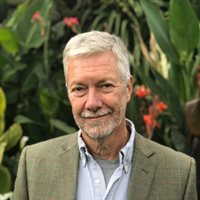
Prof. of Contemporary Slavery, Research Director
The Rights Lab, University of Nottingham
kevin.bales@nottingham.ac.uk
Kevin Bales, CMG, FRSA is Professor of Contemporary Slavery and Research Director of the Rights Lab, University of Nottingham. He co-founded the NGO Free the Slaves. His 1999 book Disposable People: New Slavery in the Global Economy has been published in twelve languages. Desmond Tutu called it “a well researched, scholarly and deeply disturbing exposé of modern slavery.” The film based on Disposable People, which he co-wrote, won the Peabody Award and two Emmys. The Association of British Universities named his work one of “100 World-Changing Discoveries.” In 2007 he published Ending Slavery: How We Free Today’s Slaves, (Grawemeyer Award). In 2009, with Ron Soodalter, he published The Slave Next Door: Modern Slavery in the United States. In 2016 his research institute was awarded the Queens Anniversary Prize, and he published Blood and Earth: Modern Slavery, Ecocide, and the Secret to Saving the World.
Monti Datta
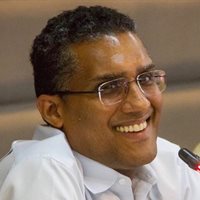
Associate Professor of Political Science, University of Richmond
mdatta@richmond.edu
Dr. Monti Narayan Datta is an Associate Professor of Political Science at the University of Richmond. Born and raised in Los Angeles, California, Monti has a BA in English Literature from UC Berkeley, an MPP from Georgetown, and a PhD from UC Davis. Monti has consulted with Free the Slaves, the Walk Free Foundation, and the Arise Foundation. He specializes in quantitative data analysis to understand more fully the causes and consequences of contemporary slavery. His current research explores the relationship between trust and anti-slavery.
Angharad Smith

Programme Officer for the Modern Slavery Programme, United Nations University Centre for Policy Research
Angharad Smith is a Programme Officer for the Modern Slavery Programme at United Nations University Centre for Policy Research. Prior to joining the Centre, Ms Smith held a research and policy internship at ECPAT International Secretariat in Bangkok, where she conducted secondary research into the sexual exploitation of children. Before her internship, she supervised a team of researchers at the University of Nottingham Rights Lab responsible for delivering data collection on government response to modern slavery for the Walk Free Foundation’s 2019: Measurement, Action and Freedom report.
Christine Annerfalk
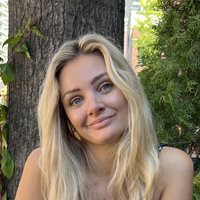
Research Associate, The Rights Lab, University of Nottingham
Christine Annerfalk is a graduated mature student of the War Studies program at King’s College London, where she specialised in areas such as human trafficking and modern-day slavery, international law, cybersecurity, intelligence, and journalism. Her dissertation was on the research topic of How the Cyber Domain Facilitates and Challenges the Business of Human Trafficking and Slavery, and took First-Class Honours. More recently Christine has been the lead researcher and coder on the Euro-Invasion Conflict Database 1513-1901 (Continental United States), is due to be published and made available for analysis in 2023.
Gabriel Bales

MSci student, UCL
Gabriel Bales (BSc Biochemistry) studies in the MSci Cell and Gene Therapy programme at University College London. He carries out manuscript editing and data coding and analysis for the Rights Lab.
Anne Andersen

Graduate Student
Anne Andersen is currently doing a Masters in International Affairs at the Graduate Institute, Geneva, where she is majoring in Global Security and Development. She previously studied conflict at Kings College London.
Charlotte Cleal

Student at St Peter Port, Guernsey
Charlotte Cleal is a sixth form student at The Guernsey Grammar School in the Channel Islands. She was Co-organiser of the climate change marches in conjunction with XR. Also works with Health Connections providing an online directory with assets supporting peoples health, care and wellbeing.
Zoe Trodd
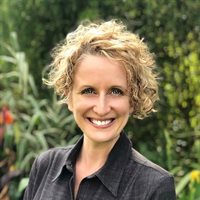
Prof. of Cultures, Languages and Area Studies, Director
The Rights Lab, University of Nottingham
Professor Zoe Trodd leads the Rights Lab and focuses in her own research on strategies to end modern slavery. She has published several books about modern slavery and holds two major research grants with the AHRC on antislavery techniques. She regularly advises governments and NGOs on modern slavery and serves on Yale University's Modern Slavery Working Group.
Todd Landman
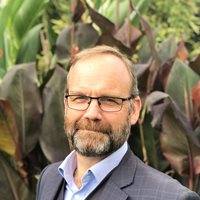
Prof. of Politics and International Relations, Executive Director
The Rights Lab, University of Nottingham
Professor Todd Landman (Politics and International Relations) oversees the Rights Lab in his role as Pro Vice Chancellor for the Faculty of Social Sciences and Rights Lab Executive Director, and contributes research across several of its programmes including Law & Policy and Data & Measurement. He has worked in the field of human rights for 25 years. He is currently working on modern slavery measurement, antislavery governance, the relationship between human rights and modern slavery, and techniques for antislavery monitoring and evaluation, among other topics.